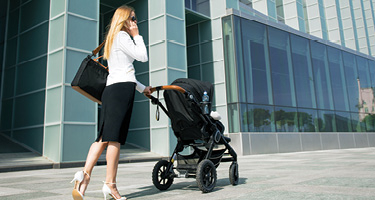HOW ARE WOMEN faring in the legal profession today? On one hand, they continue to make significant gains. Nearly 40% of lawyers in the U.S. are women. In addition, women are the majority of law school students and make up half of new associates at the country’s largest firms. Women have also made tremendous strides in the judiciary, gaining seats in both federal and state courts, and achieving momentous majorities on many state supreme court benches. On the other hand, many of the historic challenges related to retaining and advancing women in Big Law persist and, in some instances, were worsened by the disruptions of the pandemic.
It has been more than 150 years since Arabella Mansfield in 1869 became the first female lawyer in the United States after she passed the Iowa bar exam despite a state statute prohibiting women from taking the test. Her successful challenge of that restriction resulted in Iowa becoming the first state to allow women to practice law and helped open doors to their acceptance in the industry.
The courage, grit and determination of pioneers such as Mansfield formed the foundation for subsequent generations of fearless women who continued to overcome legal and societal barriers, advancing to the highest levels of the profession. These trailblazers accomplished an astounding series of firsts, shattering countless glass ceilings in the quest for equal representation, treatment and opportunities.
Current data on the status of women in the law confirms that these decades-long efforts have been fruitful. As noted, a 2022 survey by the American Bar Association found that 38% of the more than 1.3 million lawyers in the U.S. are women, a 5% increase over the past decade. This coincides with a similar growth trend for female law students: Women now make up more than 55% of law school classes, with the gap widening every year. More women than ever are leading American law schools; some 43% of deans are female.
The judicial front has also seen progress: Roughly a third of federal and state judges are women, as are four of the nine justices on the U.S. Supreme Court. Likewise, women account for more than 40% of state supreme court justices. In several jurisdictions they hold a substantial majority, including Wisconsin (six of seven), Washington (seven of nine) and Illinois (five of seven).
That’s significant progress. Yet the numbers continue to lag for female attorneys in partnership positions at the country’s largest law firms. Recent studies by the National Association of Women Lawyers and the National Association for Law Placement showed that although the number of women in the junior ranks of Big Law are robust, those figures plummet at the partnership and leadership levels—a continuation of historical underrepresentation at such heights. The largest firms still have great difficulty retaining female lawyers: Women make up just 26.7% of partners and just 22.6% of equity partners. Further, only 12% of managing partners are women, and a mere 2% of firms reported that a woman was their highest-paid attorney—a drop from 8% in 2005. Notably, only in nontraditional track/staff attorney positions are women a majority, making up more than 55% of lawyers in this category. However, these positions generally pay less and do not offer the opportunity for career advancement found on the partnership track.
Over the years, many studies have tried to discern why women leave large firms. Surveys often point to a workplace culture in which women feel less supported than their male counterparts, becoming disillusioned by uneven playing fields in originations, billing credits, marketing opportunities and professional development. This, paired with a lack of flexibility and poor work-life balance, leads many women in the prime of their careers to leave large firms to explore opportunities at smaller ones, as in-house counsel or in government and academia. Studies show that most keep working, with only a small percentage leaving the legal profession or exiting the workforce altogether.
Recent studies reveal additional troubling trends. A 2021 ABA report, Practicing Law in the Pandemic and Moving Forward, showed that although working remotely can have significant benefits, it may also create considerable unease for women, who face unique challenges due to a greater responsibility for childcare that can disrupt workflow. The report found that women were more worried than men about the adverse effects of remote work on selection for assignments, client access, business development and career advancement; they also had a greater fear of being laid off.
As a result, many female lawyers experience significant mental health challenges. According to the ABA’s 2022 Profile of the Legal Profession, women in the law were more likely to have stress, anxiety and depression than men, and more women than men (25% to 17) considered leaving the profession due to mental health troubles, burnout or stress. Overall, 67% of women reported experiencing moderate or severe stress, as opposed to 49% of men.
So where do we go from here? The pandemic taught us that we can adapt to new ways of thinking and still be successful. With so much of the landscape already fundamentally altered, the opportunity exists to rethink traditional practice models and usher in new paradigms more supportive of women.
Although the number of women in the junior ranks of Big Law are robust, those figures plummet at the partnership and leadership levels."
First, as noted, remote work can be a double-edged sword. Although many lawyers (including women) favor it for the flexibility it offers, it can also create a sense of isolation that fosters stress and anxiety. Recognizing that women often have more obligations both at and outside work, a hybrid model that allows some time to work remotely, combined with in-office time to make all-important personal connections—including mentoring relationships—may be a good option. Firms should ensure that lawyers on flex-time schedules will still be afforded opportunities to handle important matters, be considered for business development and training, and remain on a path for partnership and other leadership roles.
Firms should also work to stay actively engaged with their attorneys. Studies show that lawyers attach great importance to frequent and transparent communication from leaders, including about firm activities and goals, effective mentoring and sponsorship, practice group developments and career advancement. Such engagement creates an important sense of community and inclusion.
The surveys also reveal that female attorneys strongly value programs relating to lawyer well-being that encourage open and honest discussions about stress, burnout and other mental health issues. More than a third of lawyers report that guidance and resources related to enhancing mental health and well-being would be of great benefit to their practice, with 44% of women saying wellness resources were highly important. Comprehensive plans for sick leave and family leave were of even greater interest, with more than half of lawyers (and 67% of women in the profession) believing they’re “very” or “extremely” important.
In sum, although we’ve made great progress, stubborn challenges remain. Opportunities abound to rethink traditional approaches to make the practice of law more welcoming to, and inclusive of, women.
Michele M. Jochner is a partner at Schiller DuCanto & Fleck LLP in Chicago, one of the country’s premier matrimonial law firms, where she handles high-asset, complex appellate matters, as well as critical trial pleadings requiring sophisticated analysis, advocacy and drafting. She has held numerous trailblazing positions of leadership throughout her career, including being the first woman to head several professional and community organizations. A former law clerk to two Chief Justices of the Illinois Supreme Court, a sought-after speaker and a recognized thought-leader who has penned more than 200 articles, she has been honored as one of the top 50 most influential women in law by the Chicago Daily Law Bulletin and has been recognized in The Best Lawyers in America® since 2015 in Family Law.

































